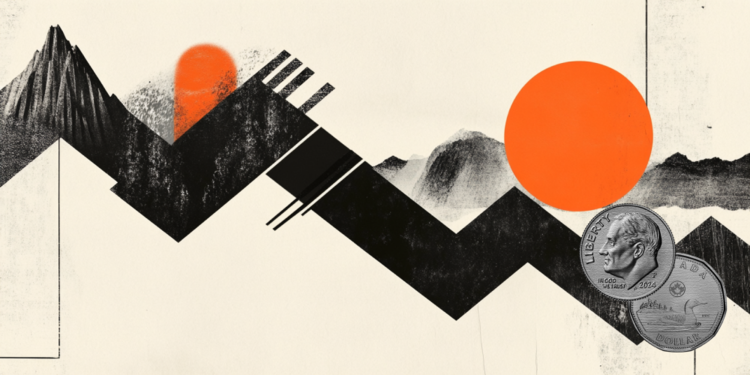Our hair is constantly growing and falling out. To give you an idea, it is common to lose between 50 and 100 strands of hair per day. However, health problems, lack of nutrients and even stress can directly affect the health of the hair and cause greater hair loss, resulting in bald patches on the scalp and even the dreaded baldness, which affects both men and women. In some cases, it may be temporary and, in others, medical monitoring is necessary.
THE Einstein Agency has separated the main doubts on the subject and explains everything from the most common reasons to the most worrying ones. Check out below what could be behind the hair loss, when to worry and what treatments are available.
Why does hair fall out every day?
The life cycle of each hair has three phases. Most hairs are normally in anagen, the growth stage that occurs when cells proliferate in the hair follicle. This can take anywhere from two to eight years and is what determines the total length of the hair.
After this period, there is a break in activity and a rest period of a few weeks – this is the catagen phase. Finally, in the telogen phase, the hair is released from the follicle before the cycle starts again. Therefore, there is always hair growing and others falling out naturally. However, when a condition causes hair loss in large quantities, the condition is called alopecia and needs to be investigated.
When to worry?
Since hair is constantly growing and falling out, it is normal to lose 50 to 100 strands of hair per day. “When you see a lot of hair on your pillow in the morning or a large clump comes out when you pull it or run your hand through it, or if you notice that your hair has lost volume or is thinner, your scalp is more visible or you notice areas without hair, these are signs of concern that we need to investigate,” explains dermatologist Barbara Miguel, from Hospital Israelita Albert Einstein.
In addition, it is worth being alert and seeking medical attention if you experience symptoms on your scalp, such as lesions, itching, flaking or pain.
Is every fall the same?
No, quite the opposite. The most common alopecias are those called non-scarring – those in which the hair grows back. And within this group there are several types and causes.
One of the best-known is telogen effluvium, when there is a sudden fall, associated with an increase in daily hair loss. “It occurs three or four months after a triggering factor, because there is a sudden transition of the hairs from the anagen to the telogen phase”, says the dermatologist. It can be acute, due to a temporary cause, or chronic – when the hair grows, but then falls out again, impacting both volume and length.
Androgenetic alopecia, also known as baldness, is genetically determined and affects both men and women. It can begin in adolescence or adulthood and, while in men it appears more on the crown and at the temples, in women it usually affects the central region of the top of the head.
There is also alopecia areata, which is associated with an autoimmune condition and leads to patchy hair loss, leaving large bald areas. It is a chronic disease with an unpredictable progression, with periods of improvement and worsening.
Cicatricial alopecia occurs when an inflammatory process in the scalp leads to the death of the hair follicle and forms scars. There are several types, but in all cases the loss can be irreversible. Treatment is more difficult and follow-up should be sought as soon as possible.
Can stress cause hair loss?
Yes. The wear and tear on the body due to situations such as loss, mourning, job changes or some other significant moment in life can lead to temporary hair loss. This is acute telogen effluvium, when the hair quickly passes through the final phase of its life and falls out, which will be observed approximately three to four months after the stressful event. However, it will grow back later.
What diseases or conditions can cause hair loss?
Infectious conditions, such as Covid-19, dengue fever or syphilis, drain the body’s resources and affect hair health. In addition, nutrient deficiencies — such as anemia or low levels of vitamin D — and changes in the thyroid gland, which regulates metabolism, may be behind hair loss.
Other situations that lead to loss are surgeries (especially bariatric surgery, which involves both surgical stress and nutritional issues), the excessive use of certain medications, the so-called “beauty chips” and hormonal changes, such as in the postpartum period.
The post-menopause phase and aging also lead to changes in the hair, making it thinner and slower growing.
Is it possible to reverse the loss?
It depends on the type of alopecia. In non-scarring alopecia, it is possible, with early diagnosis and appropriate treatments; in scarring alopecia, it may be irreparable.
Doctors have been observing an increase in cases of frontal fibrosing alopecia, characterized by a progressive retraction of the frontal hairline, creating the appearance of a higher forehead, and may be associated with eyebrow loss.
“This disease needs to be treated as early as possible, as there is no cure, but we can slow its progression,” says Barbara Miguel. Although the cause is still unknown, genetic factors, immunological, hormonal and external changes may be behind the phenomenon.
Does every fall need treatment?
It depends on the cause. When it is something temporary, such as a stress factor or an infectious condition, the hair will return to normal in a few months. “In chronic cases, we need to investigate the triggers, including anemia, thyroid problems, diseases such as syphilis and even if there is an autoimmune condition,” explains the dermatologist. “It is necessary to evaluate each case individually.”
In androgenetic alopecia, treatment is lifelong. “The person will receive follow-up and, depending on the time of diagnosis and progression, may achieve good hair coverage.”
What treatments are recommended?
Treatment depends on the type of alopecia. First, it is necessary to rule out triggering factors to determine whether it is a self-limiting condition, that is, whether it resolves itself. Some chronic cases and androgenetic alopecia are treated with topical or oral medication. Other medications and therapies may also be indicated, such as mesotherapy, laser, hair transplant, among others.
Can hair procedures cause hair loss?
Dyeing and using tools that generate heat, such as straighteners, do not cause hair loss, but they can cause what is known as chemical breakage – the sudden breakage of hair strands due to heat or chemicals. “In patients who undergo procedures such as bleaching or straightening, for example, the chance of hair breakage is very high,” warns the dermatologist.
Do the way you comb your hair and the cut have an influence?
Hairstyles that are too tight can cause traction alopecia. “The hair can become irreversible if it is pulled too much,” notes the doctor at Einstein. That’s why she suggests varying your hairstyles and avoiding buns or anything too tight on a regular basis. However, not cutting your hair does not affect growth, which is genetically determined and depends on the period of the anagen phase. It only improves the overall appearance of the hair.
This content was originally published in Why does hair fall out? Answers to 10 questions about hair loss on the CNN Brasil website.
Source: CNN Brasil
I am an experienced journalist and writer with a career in the news industry. My focus is on covering Top News stories for World Stock Market, where I provide comprehensive analysis and commentary on markets around the world. I have expertise in writing both long-form articles and shorter pieces that deliver timely, relevant updates to readers.







